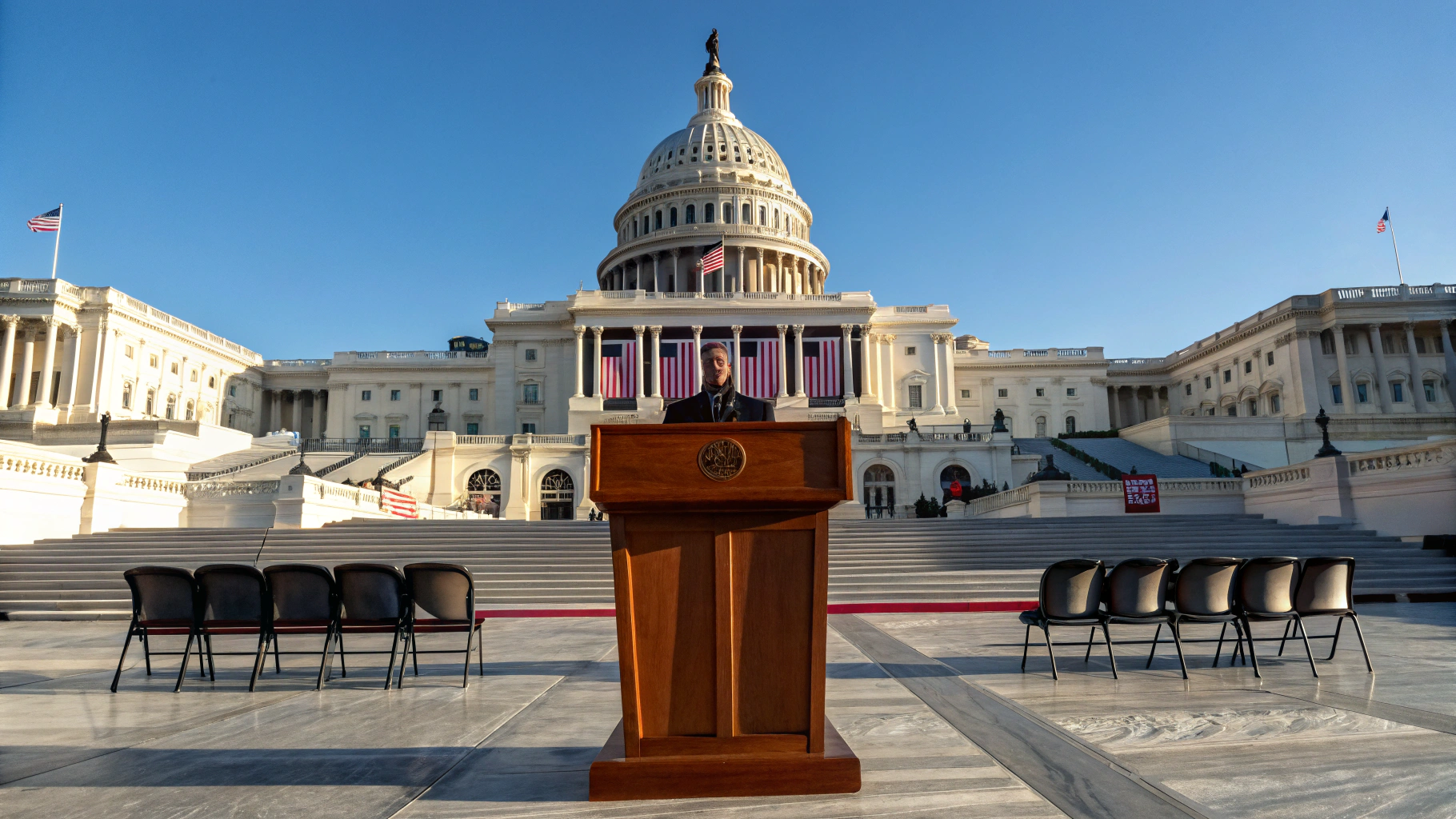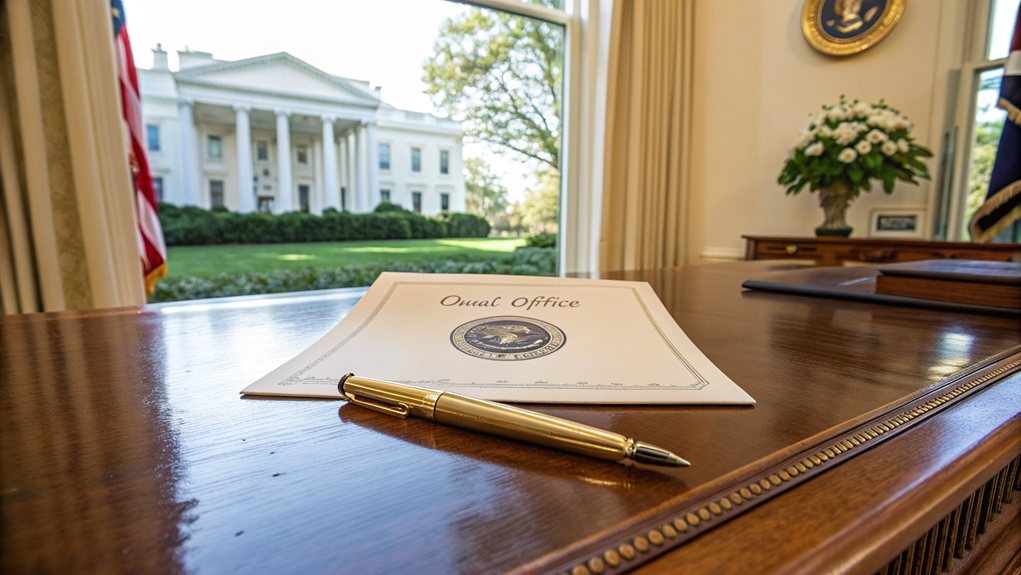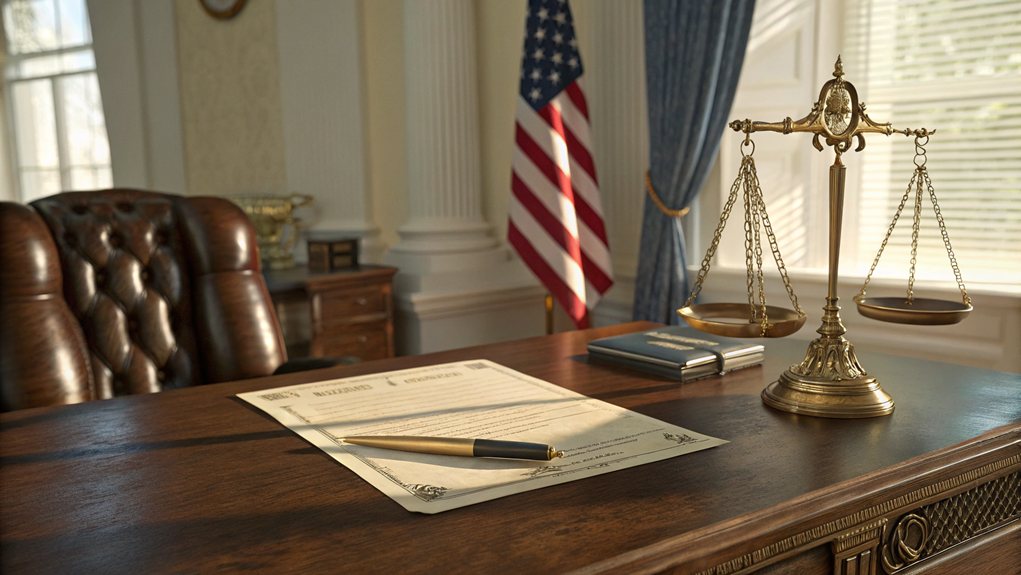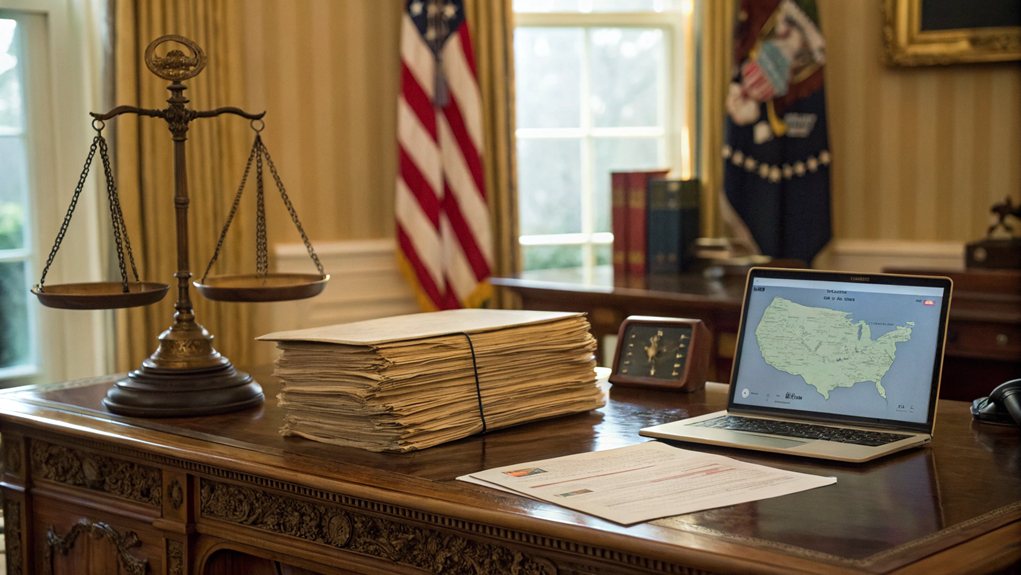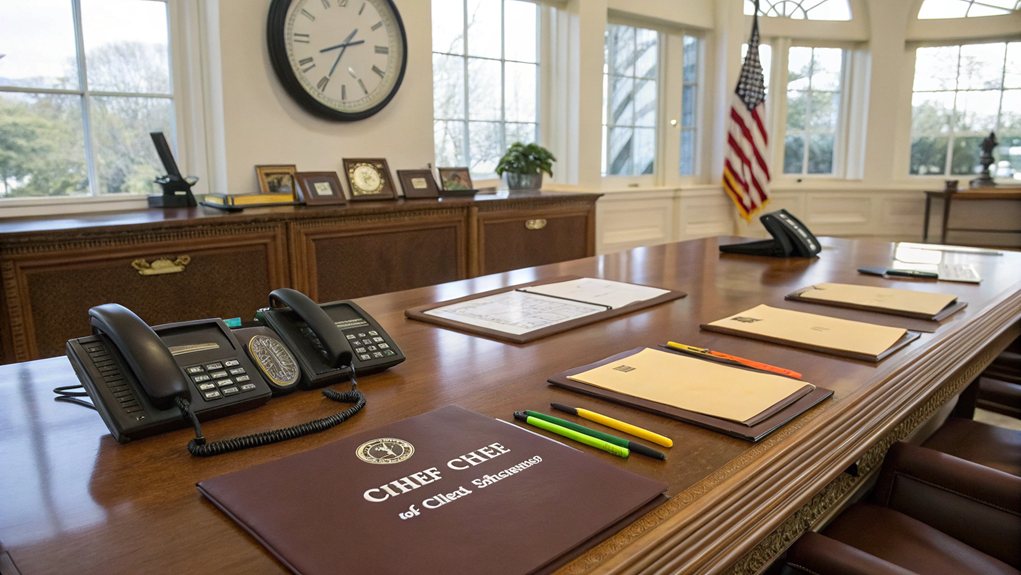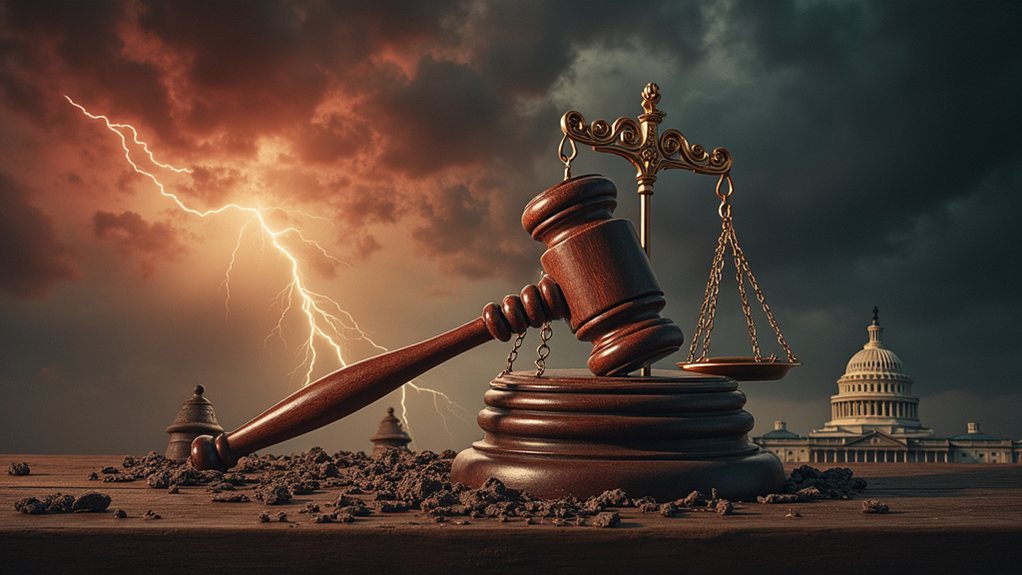The Twenty-Fifth Amendment is pretty straightforward about presidential succession. If the president bites the dust, resigns, or just can't do the job, the vice president steps right in. No more chaos, folks! This amendment clears up past confusion and guarantees there's always someone at the helm. Plus, it allows the president to nominate a new VP if needed. It's all about keeping the government running smoothly, even when things get shaky. And there's more to unpack here.

The Twenty-Fifth Amendment is a big deal in U.S. politics, folks. Ratified on February 10, 1967, it's all about making sure there's a clear plan when the president can't do their job. You know, like when they kick the bucket, resign, or get booted out. This wasn't just some random legal mumbo jumbo; it was inspired by the chaotic aftermath of President John F. Kennedy's assassination. Talk about a wake-up call!
So, what does it actually say? Well, first off, if the president bites the dust or resigns, the vice president doesn't just hang around waiting for a call. Nope, they automatically step up. That's right, it's not just a "acting president" gig; they're the real deal. This provision cleared up all the messy confusion that came from previous succession crises—thanks a lot, John Tyler. Presidential succession is now clearly defined, ensuring continuity of leadership in the executive branch. Additionally, the amendment provides a clear line of succession that eliminates ambiguity regarding presidential vacancy.
Now, let's not forget about vice-presidential vacancies. Before this amendment, if the VP took a permanent vacation, the seat could remain empty for ages—like, forever. But now, the president can nominate a new VP who slides into the role after Congress gives a thumbs up. Gerald Ford was the trailblazer here, filling the spot in 1973. Talk about stepping up to the plate. An important feature is Section 4, which allows the Vice President and a majority of the Cabinet to declare the President unable to discharge the powers and duties of the office, ensuring a mechanism for addressing presidential incapacity.
And what if the president just needs a quick nap? The amendment covers that too. A president can voluntarily hand over power to the VP, making them the "acting president" until the big boss is back in action. This is super handy for those pesky medical procedures. It's like a power-sharing agreement, but with a bit of drama.
In short, the Twenty-Fifth Amendment cleaned up a lot of the messy details about who's in charge when things go sideways. It's a lifebuoy in the political ocean, ensuring the country doesn't just drift aimlessly when leadership changes.
Frequently Asked Questions
What Events Can Trigger the Use of the Twenty-Fifth Amendment?
The Twenty-Fifth Amendment can be triggered by a few key events.
First, if the President dies or resigns, the Vice President steps up. Simple enough, right?
Then there's the whole impeachment thing, where the Vice President gets the nod again.
On the flip side, the President can hand over powers temporarily—like during a medical procedure.
And if things get dicey, the Vice President and Cabinet can declare the President unfit. Fun times!
How Can a President Regain Power After Temporary Incapacity?
When a president needs to reclaim their powers after a little timeout, it's pretty straightforward—at least on paper.
They just write a note saying, "I'm back!" Easy, right?
But wait! If anyone doubts that the president is fit to govern again, Congress has to scramble together within 48 hours to sort it out.
Two-thirds of both Houses must agree, or the president gets their gig back automatically.
Talk about pressure!
Who Is Responsible for Determining Presidential Incapacity?
Determining presidential incapacity? That's a job for the Vice President and a majority of the Cabinet.
Yep, a bunch of folks decide if the President can still function. It sounds dramatic, but it's true. They declare incapacity and then Congress jumps in.
They've got 48 hours to gather and make a call. Two-thirds of both Houses have to agree.
It's all very formal, but let's be real—this isn't exactly a regular Tuesday.
Can a Vice President Refuse to Assume Presidential Duties?
Can a Vice President just say "no" to stepping up as President? Nope. They can't refuse.
It's not like there's a "not my job" option in the Constitution. If the President is incapacitated, the Vice President is expected to jump in—no questions asked.
It's all about constitutional duties here. Refusing could spark chaos, and let's be honest, nobody wants that drama in the Oval Office.
What Historical Examples Have Invoked the Twenty-Fifth Amendment?
The Twenty-Fifth Amendment has seen some action, though not a lot.
Gerald Ford used Section 2 to fill the vice presidency after Spiro Agnew left, which was groundbreaking.
Then there's the infamous case of Reagan—who didn't formally invoke Section 3, yet his health issues highlighted the amendment's purpose.
Section 4? Still waiting for its moment in the spotlight.
